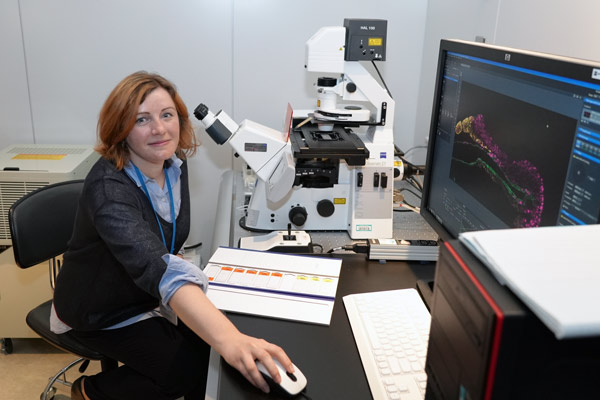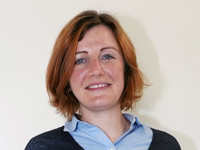Oct. 27, 2022
Growing kidney organoids
Olena Trush, Research Scientist
Please describe your research.
Each human kidney is made up of about a million filtering units called nephrons. I aim to reveal the mechanisms behind a key stage of nephron development during which a structure known as an S-shaped body (SSB) is formed. SSBs are characterized by a unique S-like folding and are critical to further looping of nephron tubules. Unfortunately, SSB structures are not easy to establish in cell cultures and we aim to improve this. I also work on another project that is trying to make pluripotent stem cell-derived kidney organoids—tiny, self-organized three-dimensional tissue cultures—for hamsters. Hamsters are short-term hibernators and we would like to induce this torpor state in the organoids and examine its unique mechanisms.
What do you think has been the most interesting discovery in your field in the last few years?
In my opinion, one important recent discovery has been how to reproduce kidney formation in the lab using human pluripotent stem cells. This advance was pioneered by our team leader Minoru Takasato. We are broadly using his core kidney organoid induction protocol for our research today.
“My research is important for sustainable development or society because…”
It is aiming to reduce the use of experimental animals by improving stem cell-derived cell cultures that can be used in their place. We also want to provide better patient-derived organoids to help with developing better personalized medicine, and for material to aid in organ regeneration and transplantation. The latter might also help eliminate organ rejection if it is generated by the patients’ own cells.
How and when did you join RIKEN?
I found information about my current position using a government research-career support website called the Japan Research Career Information Network (JREC-IN) Portal. I immediately contacted Takasato-sensei to discuss the opportunity. Prior to submitting the application, I had a short visit to the lab to introduce myself to the team, and then I submitted the application and went through the selection process.

What has been your most memorable experience at RIKEN?
I think the most memorable part of my RIKEN experience was learning how to use the lab. I changed from developmental neuroscience to kidney development, so most of the relevant research techniques were new to me. It was an unforgettable experience to induce my first nephron-like structures from human stem cells and I had tremendous support from my colleagues during the transition.
How has being at RIKEN helped your research?
There are many reasons, but one is that we have steady and efficient access to animal material through the RIKEN LARGE (Laboratory for Animal Resources and Genetic Engineering).
Rate this article

